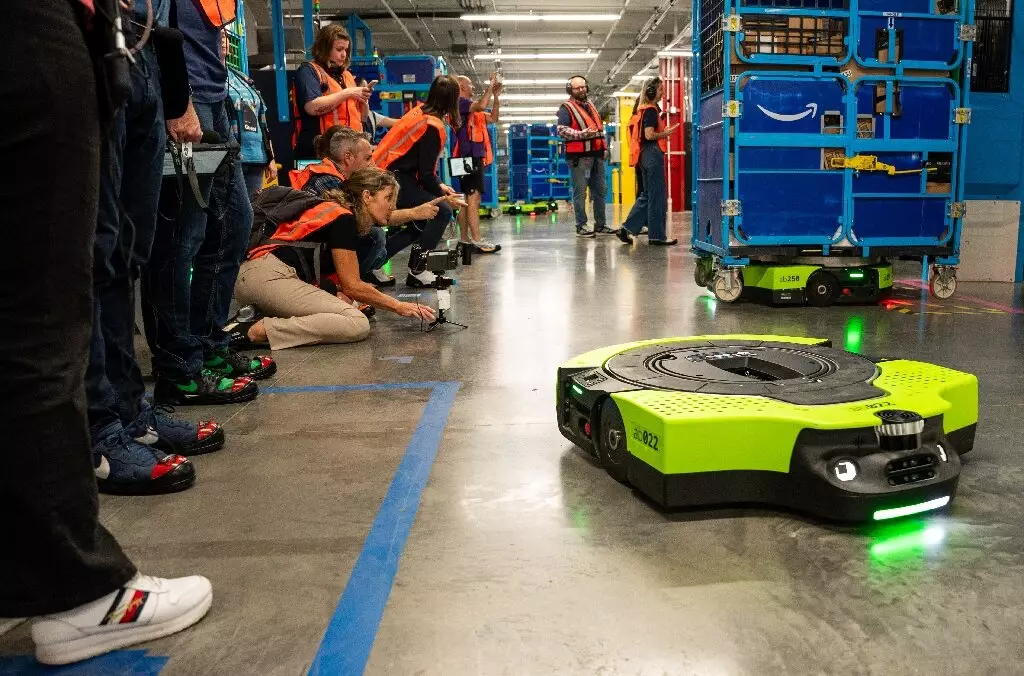Amazon has become a household name, its presence permeating commerce, entertainment, and increasingly, healthcare. The company’s strategic direction aims to enhance its e-commerce operations while integrating deeper into users’ daily lives through a myriad of innovations. Recent announcements have highlighted Amazon’s commitment to streamlining its logistics and expanding service offerings, yet these advancements also come with significant scrutiny regarding the implications for competition and consumer welfare.
A focal point of Amazon’s recent innovations is the introduction of a sophisticated computer system in delivery vans. Douglas Herrington, head of Amazon Stores, emphasized that this cutting-edge technology will enhance delivery efficiency, allowing vans to recognize their stops and optimize package drop-offs. “When we speed up deliveries, customers shop more,” Herrington noted, indicating a correlation between delivery speed and consumer purchase behavior. This efficiency is part of Amazon’s ambitious vision for 2024, where it aims to achieve the fastest Prime delivery speeds across the globe.
The cost-saving measures that accompany these innovations are noteworthy, with Amazon reportedly reducing shipping costs by 45 cents per unit. Given the colossal scale of its operations—having recorded a staggering profit of over $30 billion on total revenue that topped $575 billion—this reduction translates into significant savings that can potentially enhance profit margins and keep Amazon’s competitive edge intact.
Analysts have described Amazon’s multifaceted business model as a “flywheel,” with a primary focus on the Prime membership at its core. This model not only promotes consumer loyalty but also integrates various sectors under one umbrella. According to eMarketer’s Suzy Davidkhanian, this structure solidifies Amazon’s dominance in areas like retail, advertising, and cloud computing, all while maintaining engaged consumers across its platforms.
However, this expansive approach has drawn the attention of U.S. regulators, as the Federal Trade Commission has filed a lawsuit against Amazon, accusing it of monopolistic practices that harm competition. Critics of the company argue that its data-gathering capabilities, which are leveraged to provide targeted advertising and product recommendations, create an uneven playing field that stifles potential competition.
Amazon’s foray into the healthcare sector marks a significant diversification of its service offerings. The introduction of the One Medical service, available to Prime members for a nominal fee, promises consumers easy access to virtual health consultations and prescription management. This healthcare strategy, coupled with the rapid delivery capabilities of the Amazon Pharmacy, positions the company to capitalize on a burgeoning market.
Hannah McClellan, head of Amazon Pharmacy, articulated the vision of creating a “pharmacy in your pocket,” emphasizing convenience alongside the expectation of swift delivery. This venture highlights Amazon’s ambition to be the go-to platform for an array of consumer needs, further ingraining its service into the quotidian lives of customers.
As Amazon prepares to integrate more automated features, it strives to enhance the shopping experience while simultaneously redefining logistics. The upcoming deployment of “automated micro warehouses” in close proximity to grocery stores displays a commitment to innovation in distributing goods. Utilizing robotic systems to handle order fulfillment, Amazon aims to facilitate a seamless shopping experience wherein consumers can shop fresh groceries next door while managing online orders.
Artificial intelligence is another critical component of Amazon’s strategy. From tailoring product descriptions to pique consumer interest to utilizing tools that help sellers create appealing listings, Amazon is intent on moving customers swiftly from the research phase to completing purchases. This technological emphasis reflects the company’s understanding that consumer behavior is increasingly driven by personal relevance and instant access to information.
Despite these advancements, Amazon faces criticism and scrutiny regarding the working conditions within its fulfillment centers. The emphasis on rapid delivery and automated efficiency has raised alarms regarding worker safety, with reports indicating that stress and pressure can make Amazon’s warehouses more hazardous than the industry average. Advocates for workers argue that the relentless pursuit of efficiency compromises employee well-being for the sake of operational speed.
While Amazon’s relentless expansion across various sectors—from logistics to healthcare—demonstrates its ambition to become an integral part of consumers’ lives, it does not come without challenges. The balancing act between efficiency and ethical responsibility, particularly regarding employee welfare and competitive market practices, will shape the future trajectory of this tech giant. As Amazon continues to innovate, it must remain vigilant to the complex ramifications of its growth—both for itself and for the broader marketplace.


Leave a Reply